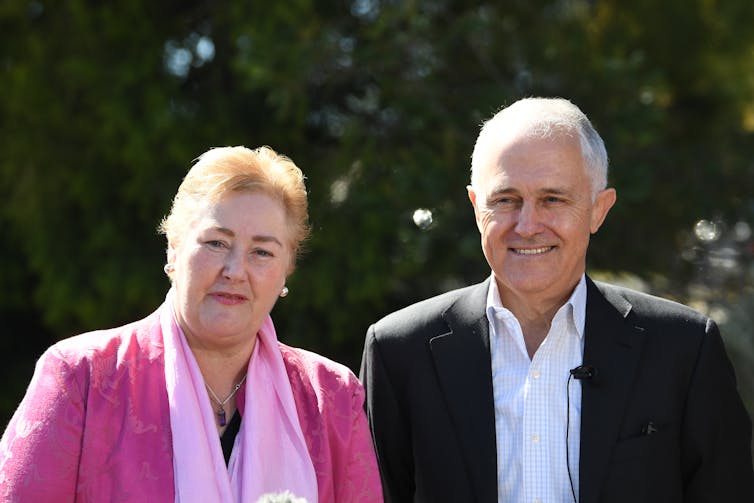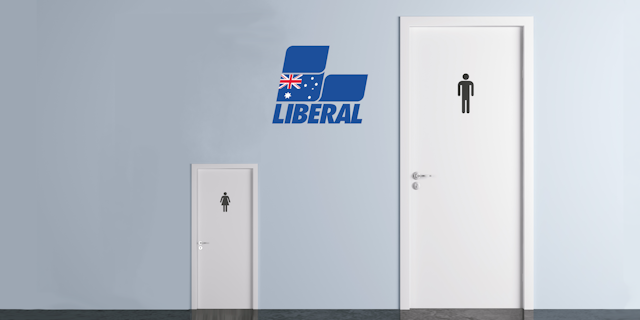With LNP frontbencher Jane Prentice ousted by a male challenger and Ann Sudmalis under threat, much has been said about the Coalition’s record of electing women to Australian parliaments.
The representation of women amongst Coalition MPs is significantly lower than for Labor or the Greens, and this gap is growing. This is concerning because parliaments should be reflective of the societies they represent. The Coalition should be worried because it coincides with a declining number of women voting for it.
But this isn’t unique to Australia
This partisan gender gap is also reflected in other Westminster parliamentary democracies such as the United Kingdom, New Zealand and Ireland.
Typically, leftist, green and social democratic parties nominate a higher percentage of female candidates than centre-right, conservative and far right parties.
Read more: How the Liberals can fix their gender problem
The gap can be attributed to the social justice values that underpin leftist ideology, which has facilitated the successful introduction of quotas in these parties. But is also an outcome of the male-dominated cultures that permeate political parties, particularly long established ones.
The interaction of right wing values with masculine institutions is not particularly empowering of, or for, women.
This may also explain why gender gaps in voting behaviour have shifted over time. Women were once more likely to support parties of the centre right than the centre left, but the former can no longer take women’s support for granted. According to the Australian Election Study, women were more likely than men (by 7%) to support the Labor Party in the 2016 federal election.

Despite setting targets to achieve representational gender parity by 2025, the Coalition remains steadfastly opposed to the idea of quotas, which they believe “miss the point about merit-based pre-selections”. It is an argument well rehearsed by quota opponents worldwide.
Prior to the adoption of a gender quota law in Ireland, the under-representation of women in Irish politics was framed as:
an unfortunate consequence of a gender-neutral, fair and effective system, which produced the best people for the job.
In New Zealand, the issue of gender quotas was hotly debated in 2013, when the Labour Party drafted a constitutional remit proposing the adoption of a UK-styled all-women shortlist option for candidate selection in electorate seats.
A media frenzy followed, with the policy labelled a “man ban” and commentators accusing Labour of discrimination, failing to select on the basis of merit, and looking “out of touch” with its rank and file.
Candidate selection: The ‘secret garden’ of politics
Such arguments ignore the many informal practices, norms and relations surrounding candidate recruitment and selection, a fact that has led political scientists to describe candidate selection as the “secret garden” of politics.
The reality is candidate selection is often determined by interpersonal links, summed up in the old adage of who you know, not what you know. Given the male dominance of politics, this practice privileges men, who disproportionally hold positions of power within political parties and tend to recruit and select other men for political office.
Some studies suggest moving away from rank-and-file pre-selections will facilitate more equal gender representation. A more centralised, select group of party elites is better able to coordinate to increase the number of women candidates.
This argument speaks to the endorsements of Amanda Stoker and Georgina Downer, neither of whom faced rank-and-file votes. Downer was endorsed unopposed, and Stoker was endorsed by members of the Queensland LNP’s State Executive Council.
Proportional electoral systems facilitate this elite involvement because party lists are usually centrally determined. This is the case in New Zealand, where the Labour Party now has a soft target of 50% women and conducts an equity review after each bloc of five candidates during the list selection procedure.
The National Party also applies the principle of balance in its nomination process, although it has never applied strict alternation on its lists.
Quotas make a big impact in Ireland
While the Liberals may resist gender quotas, they cannot ignore the overwhelming evidence that quotas increase the numbers of women in politics.
The gender quota law in Ireland was adopted in 2012. This was partly in response to calls for political reform and greater diversity in public leadership following the financial crash and ensuing recession of 2008 - 2013. But it was also designed to intervene where political parties had failed.
While political parties in Ireland had given rhetorical support for more women in politics throughout the 2000s, their actions, particularly in the long established and centre-right parties of Fianna Fáil and Fine Gael, told a different story. Informal gender targets were missed; in the general elections of 2002, 2007 and 2011, Fianna Fáil selected just 13% women candidates, and Fine Gael 16% (the figure for the centre-left Labour was 25%).
Following the 2011 general election, just 15% of the seats in the Irish lower house of parliament, Dáil Éireann, were occupied by women. With election surveys and analysis showing women did not face discrimination at the hands of the electorate, it was clear women’s political under-representation lay at the door of political parties.
If Irish political parties could not be trusted to ensure gender equity, it was clear an interventionist measure in the shape of gender quotas was required. The 2012 gender quota law specifies that political parties must select at least 30% female candidates and at least 30% male candidates; if they do not, they will forfeit 50% of their annual public funding.
The impact and success of the law was immediate. In its first roll-out at the 2016 general election, there was a 90% increase in women’s candidacy and a 40% increase in the number of women elected. All parties met the 30% gender quota threshold.
Electoral systems matter too
In New Zealand, with the adoption the German model of proportional representation (Mixed Member Proportional, MMP) in 1996 there was a significant increase in the selection and election of women.
Women constituted 28.3% of the new 120-member parliament, but most were elected from minor parties. Then, in 2005, for the first time, the percentage of women parliamentarians surpassed 30% (reaching 33.1%), with 19 Labour women and 12 National women sitting in parliament, supplemented by eight women from the minor parties. There are now 19 National women in parliament (33.9%). The Greens outshine both major parties with a caucus that is 75% female, the result of a long-held practice of alternating men and women on their party lists.
One reason why National has done better than conservative parties elsewhere maybe a result of a contagion effect, which is more likely to appear in proportional systems. Contagion occurs when a small party (such as the Greens) stimulates other (larger) parties (such as Labour) to nominate more women candidates.
In doing so, the smaller parties highlight the lack of electoral penalty associated with selecting women candidates, while also threatening to take at least some votes from the largest party closest to them on the political spectrum.
Once a large party begins to nominate more women, the nature of party competition will ensure that other parties (National), out of political necessity, adopt their own gender equality strategies.
Where will the Liberals go from here?
Despite the ALP quota, contagion effects seem to have stalled in Australia.
Rather than implement quotas, the Liberal Party has just announced that it will establish a new fighting fund, the – Enid Lyons Fighting Fund – to assist women candidates to gain pre-selection.
Read more: Coalition's lost ground on women MPs shows we need to tackle new gender biases
This initiative recognises there is a gender gap in political finance, with women less able to access the often large sums of money that are required to run effective campaigns.
It counters similar initiatives on the left of politics in Australia such as Emily’s List and the National Labor Women’s Network. But it also reflects historical initiatives such as The Australian Women’s National League (1903) and the Liberal Feminist Network (1981), which were focused on increasing funds and skills for the pre-selection of women.
With the representative gender gap between the two major parties growing ever larger in Australia, reinstating these historical initiatives is probably too little, too late.
Our political parties are responsible for changing their cultures, and if they can’t learn from each other, the most effective way of doing this is through interventionist measures.

